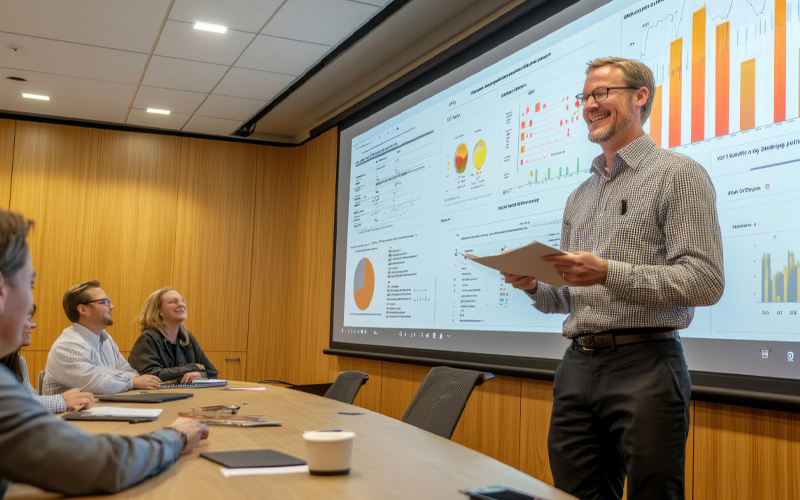Have you heard business owners define their target market as ‘everyone’? While the optimism is great, the reality is that your products or services must align with a specific target market. Compare these two statements by a health supplements manufacturer –
‘Our target market is every who wants to improve their health’
vs.
‘Our target market is women above 30 years looking to re-gain adequate nutrition after motherhood’
This article will explain what market segmentation, targeting, and positioning (STP) are. It will also explain how you can create a buyer persona and conduct an STP marketing analysis and its benefits.
What is market segmentation, targeting, and positioning?
STP marketing delivers a personalised and relevant message to the target audience. It uncovers niche markets and opportunities, thus making your investment yield better results.
This style of marketing selects the most valuable customer segments for a business and develops a product positioning strategy for each segment. It evaluates the commercial attractiveness of each market segment and allocates the marketing budget accordingly.
How to create a buyer persona?
A buyer persona is a description of your ideal customer. By having a few buyer personas, you can understand the audience better, segment them, and target lead and sales strategies. Here are some of the questions you must ask –
- What is the profession of the buyer?
- What is their age range?
- What are their hobbies?
- What is the income range of the buyers?
- What is their geographical location?
- What are their short-term and long-term goals?
How to conduct STP marketing analysis?
This is a strategic exercise that helps you position your products and services in a largely anonymous audience. Here is a brief description of the steps –
Segmentation
Segmenting the audience could be a unique practice for every business based on its products and services. But, some of the common parameters to work on based on interviews, surveys, and customer data are –
- Demographics – Understand the age, gender, location, education, and profession of the audience.
- Psychographics – Know the priorities, beliefs, values, risk aversion, and personality traits that encourage the buyer to choose your product or service.
- Lifestyle – This includes the customers’ entertainment preferences, hobbies, and non-work activities.
- Belief and values – These comprise religious, spiritual, political, nationalistic, or cultural beliefs and values.
- Life stages – This segment focuses on customers of a certain age and life stage.
- Geography – This identifies the customers based on their country, area, region, rural location, and metropolitan city.
- Behaviour – Answer questions about the customers’ brand loyalty, shopping habits, and entertainment preferences.
Targeting
Once you segment the audience, it is time to target them. But before doing so, you must ask yourself these questions –
- Are there enough potential customers in a segment to justify the investment?
- Would targeting yield enough profits?
- Is one segment measurably different from the other?
- Is the segment accessible to all the members of Marketing and Sales?
- Is your company prepared to serve the segment? Are there any legal, physical, social, and technological barriers that you need to fix?
Positioning
Examine your products and services from the perspective of the target segment. Identify the motivation factors, pain points, and features and benefits. Build a brand positioning map to know which segment you want to invest the most in.
Benefits of using STP marketing
As a marketer, you want to know where your dollar is going and what the returns are. Here are some of the benefits of STP marketing –
Better marketing campaigns
Build marketing campaigns that deal with a pain point and solve a problem for the customer. Show specific products or services to relevant customers. For example, if you sell online meditation courses, you could target pregnant women who want better health and wellness from the comfort of their homes.
Improved product development
Create new products or services that better serve your target market. This builds a niche market and brand loyalty. For example, if you manufacture shoes for sportsmen, you can design new products based on the type of game, foot size, shape of the sole, etc. You can have different products starting from beginners to professionals.
Locate new markets
Monitor your sales to know who is buying your products and services. This could open a new avenue for brand expansion that was previously unknown. For example, a company that sells women’s beauty products can develop a new range of products for men tapping into the other half of the market.
Provide brand guidance
Successful businesses connect their brand to their values and goals. This happens through the brand messaging for customers, media, and investors. By knowing your target audience, you can realign your branding collateral, such as the logo, website content, and press releases.
For example, a sustainable tourism company could show their commitment to the United Nations Sustainable Development Goals in its branding.
Influence decision-making within the company
The company’s management can make effective business decisions and set relevant goals. This appeals to a strong target market and assures the brand’s success.
For example, a company that sells takeaway meals could open an office in more metropolitan cities with a high working class that does not have time to cook.
For organisations on the digital transformation journey, agility is key in responding to a rapidly changing technology and business landscape. Now more than ever, it is crucial to deliver and exceed on organisational expectations with a robust digital mindset backed by innovation. Enabling businesses to sense, learn, respond, and evolve like a living organism, will be imperative for business excellence going forward. A comprehensive, yet modular suite of services is doing exactly that. Equipping organisations with intuitive decision-making automatically at scale, actionable insights based on real-time solutions, anytime/anywhere experience, and in-depth data visibility across functions leading to hyper-productivity, Live Enterprise is building connected organisations that are innovating collaboratively for the future.
How can Infosys BPM help?
By outsourcing your marketing operations (MarkOps) to a trusted partner like Infosys BPM, you can add more value to your business. The Infosys BPM MarkOps team helps across CRM, marketing campaign design, CMS, event operations, and image and video production according to your budget.
Read more about marketing content operations at Infosys BPM.








